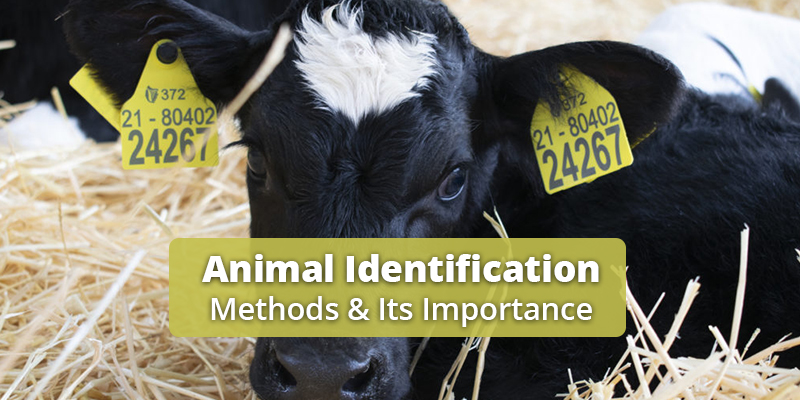Livestock farmers understand the value of their animals as they depend upon them to fulfil daily needs. This makes it necessary to differentiate between their and others’ animals. For thousands of years, people have been using various animal identification methods; however, along with livestock farming developments, several new techniques have become prominent these days.
Farmers generally establish the identity a few hours or days after the birth of an animal. Animal identification is a much-ignored aspect that is vital for Livestock farming. Let’s read about some of the most common and effective animal tagging methods and their benefits.
Methods of Identifying Farm Animals
- Tattooing
Tattooing is one of the oldest permanent tagging methods, which involves needle-like projections on animal skin, mostly on one ear. They fill ink into the punctures forcibly, leaving the tattoo visible once the wounds heal. Equipment used for this method should be sterilized before use to ensure the animal remains safe against any infection or disease. Usually, old tattoos are not easily identified, and you may require bright light to read.
- Number Tagging
Number tagging involves large metal tags that are readily identifiable from a reasonable distance. Farmers simply attach metal tags with neck chains and loosely fasten the chains around animals’ neck. Though it is a traditional method, the tags may get lost, which is a significant disadvantage. Number tagging is widely used for donkey, sheep, goat, cattle, and rabbit.
- Ear Tagging
Ear tags, unlike tattoos, can be read from a distance; you don’t need to catch the animal to identify. Ear tags are commonly used for animal identification in animal husbandry. Farmers must note down the number that is assigned to their animal and mark the cartilage ribs of ears before putting in the ear tag. The tag will help farmers to identify their animals and record farm details easily.
- Ear Notching
Ear notching is an easy way to identify animals, commonly used for goats, rabbits, pigs, sheep, etc. Following this method, a professional livestock worker makes notch by cutting a small portion of the animal ears. Each notch represents a number that goes according to its location on ears, for example, top-end, bottom, extreme left, and many times, left/right ear also helps differentiate animals.
- Branding
Branding is another effective method for animal identification, which is generally done during the very young age of the animal. Under this technique, a heated tool having a number or symbol is gently pressed on the animal’s body, usually the back. Once the skin tissues are partially burned and healed, the number/symbol starts appearing and remains permanent for long. A similar method, paint branding, is also used for temporary bases.
- Nose printing
Nose printing represents a few of the most accurate permanent identifications; unlike in other cases, it is almost impossible to modify. It is a common practice for farmers that regularly participate in exhibitions and sales of cattle and sheep. Nose printing, similar to fingerprinting, helps identify ownership using lines and dotted pattern which are unique on each animal’s nose.
- Microchip Insertion
The microchip identification method is the latest due to the technology included. A microchip is inserted in animals’ ear or tail, allowing a permanent identification of ownership or the place the animals belong to. Livestock experts often recommend this method as animals feel just a pinch of pain when the microchip is inserted. After insertion, it is vital to scan the chip to ensure it is working correctly. The microchip is necessarily required at some livestock shows and exhibitions.
Benefits of Animal tagging:
• Livestock farmers or animal breeders can easily maintain records of animals.
• It helps treating animals with the availability of past records.
• Easily choose replacement stock before the coming breeding season.
• Track behaviour and movement of the animals.
• Establish ownership.
• Animal tagging is mandated for insurance claims.
• Study and manage your animals (for research purposes).
You might give names to your animals and identify them with the same, but this method might work for a small animal farm but not when you have to handle a large herd of different animals. Therefore, animal tagging is essential; and nowadays it is easier too, you may choose any suitable method from the above-described. You still might have several queries before you tag your animals, need not worry. Download and use Apni Kheti app on your smartphone, get answers to all your questions, and solutions to your problems related to farming and agriculture. Download the app now!
For more information about Agriculture and Livestock, download Apni Kheti app – Android, iPhone





